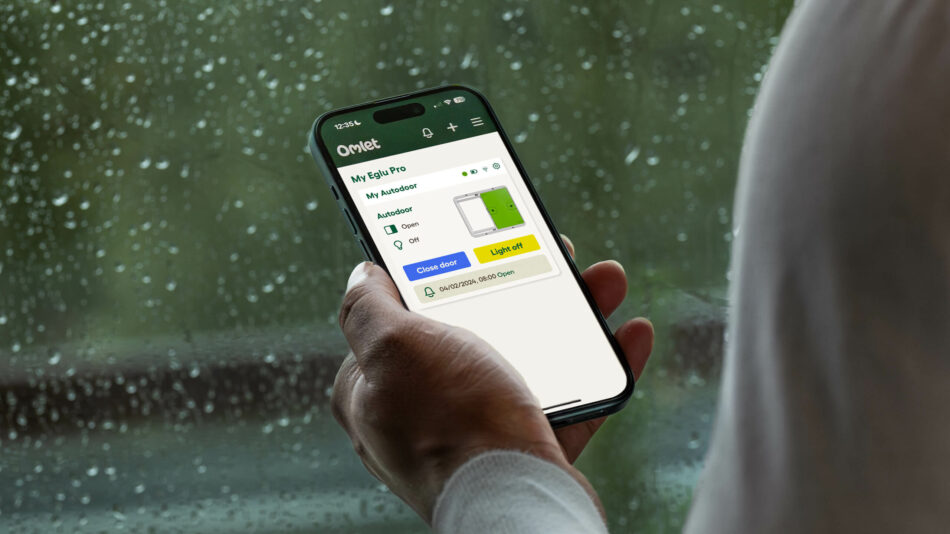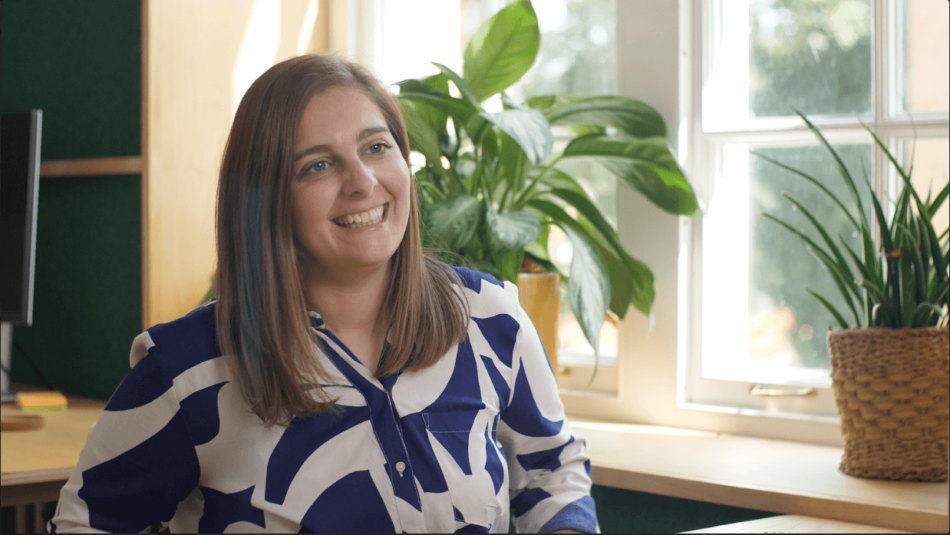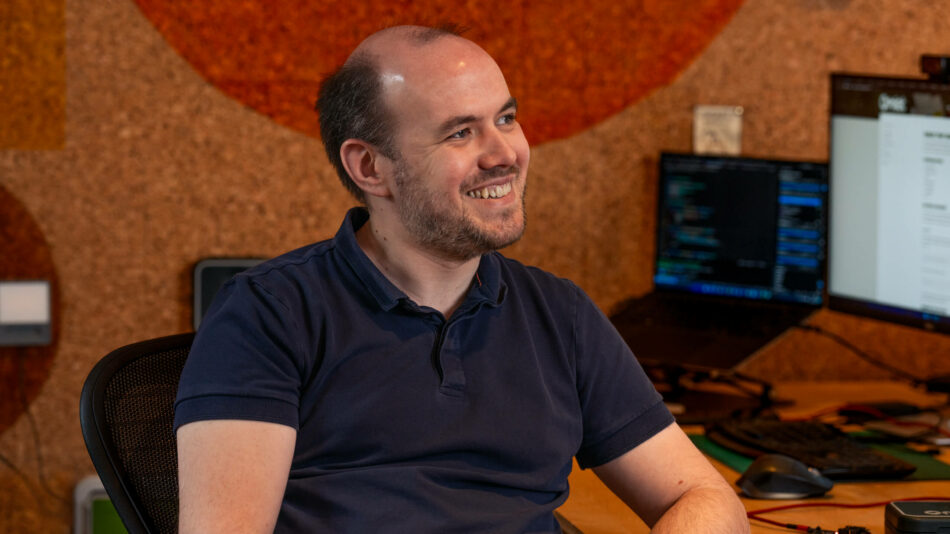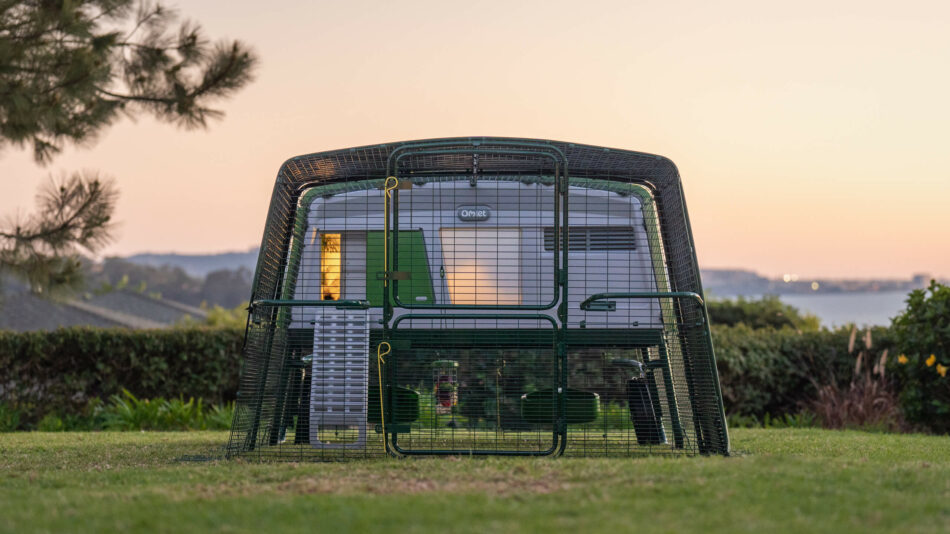Can TECH bring us closer to our chickens?
We never stop asking the questions that help us invent better. And because Omlet’s the sum of many parts, those questions are never asked in isolation, but by different people with different expertise and passions. It’s by bringing this bold thinking together that we can create truly innovative designs that bring us closer to our pets everyday, such as the new Omlet Smart Autodoor.
Wonder this way
Our designs begin with conversations over coffee and ideas that go ping in the night. With the Smart Autodoor, a shift in the type of person keeping chickens has driven a change in approach to chicken keeping itself. Over to Omlet Head of Wonder, Rebecca, who leads our new product research and strategy from the front, traveling the world to meet Omlet customers and chicken enthusiasts, gathering the unique insights that help us invent new and better ways to care for chickens. She does this in the context of market trends and analysis that give her a broad understanding of what our customers need, and why.
“We’re seeing a broad swathe of millennials entering the chicken keeping market. Their lifestyles and other demands on their time make this hard – they’re often full time workers in a suburban or urban context, they often have young families – they already have lots going on and time is a scarce and precious commodity. That’s where the Smart Autodoor comes in. This is a generation that has grown up with the convenience of technology, and they want to be able to apply its potential to facilitate integrating chicken keeping into their lives.“
Rebecca Wagstaff
So, at this first stage, we will establish the demand for a product and hold it against our brand philosophies – in essence, asking, why should we design an Omlet Smart Autodoor?
“This comes back to one of our core values at Omlet, which is at the heart of our purpose: enabling more people to keep chickens. Our designs are based on the belief that more people should be able to keep and have the benefits of keeping chickens, even if they don’t have lots of land or lots of time. So we want to design products that enable them to do this, and in a really efficient way.”
Rebecca Wagstaff
This evaluation and analysis is a key part of the journey before we get into the workshop. We need to be sure that any product we design will capture the spirit of Omlet and our purpose – bringing people and pets closer.
“There is a lot of noise when it comes to technology and connection. Because there is of course some argument and concern that technology reduces connection and interaction. But when it works in the right way, to support our bonds rather than replacing them, then it actually enables you to be more connected.
And this is the purpose of the Smart Autodoor – by being able to check in with and control your coop door from your phone efficiently, via the Omlet app, you can have peace of mind even if you are not at home. You can see the status of your coop door in real time. It is about staying connected, wherever you are.”
Rebecca Wagstaff
The Omlet what?
In case you missed it, that was the Omlet app – developed alongside our Smart Autodoor to enable its potential, and opening up a new world of tech facilitated chicken keeping. Enter Dave, Head of Technology here at Omlet HQ.
“Technology and product design are natural partners, increasingly so. Look at light bulbs, doorbells, fridges, washing machines – all these appliances can be started from your phone. So why not your chicken setups? It’s a functionality a lot of our customers want. They want to be able to connect with and control their coop when they’re not home.”
Dave Legg
Having established that the Omlet Smart Autodoor was a product our customers wanted and that would build on our brand values of chicken keeping for all and closer connections with our flock, it was time to rope in Dave and the team and get their formidable but enigmatic brains whirring.
“As a process, designing the app was fairly straightforward, as we were able to use tools similar to building our website. We did, however, have to write new firmware for the control panel itself, to enable the new functionality. Firmware is like software, but built into the hardware itself – so a bit less soft if you like.
We have kept all of the logic that makes the door work in the hardware of the door itself, which means you can still program your door settings using the control panel on your coop – and it will function just fine without needing to communicate with your phone, or with the Wi-Fi.
So we’ve kept all of the current functionality – including the control panel – but improved it by connecting it to the internet. This allows customers to check their chickens are safely shut away from wherever they are in the world. We could have removed the control panel, and built all of the smart electronics directly into the door itself, but we know that the smart functionality is not for everyone. Retaining the control panel allows the product to work for all of our customers – and it means that anyone with our current Autodoor who wants to upgrade it to a Smart Autodoor needs only replace the control panel, rather than the door itself.”
Dave Legg
The Omlet Perfection Process
Another cornerstone of Omlet design is to test, refine, and test again. We call it the Omlet Perfection Process, and no app, coop or Smart Autodoor is exempt.
“This process of test, refine, repeat is a huge hallmark of Omlet product design. And it’s really valuable working with our customers along the way – they have really enjoyed the trials – we get really high engagement, our audience is very switched on. It’s brilliant for us to get their unique experience and perspectives on what they need the product to do, it helps us go further. It is so powerful. One customer, one word, can make the difference between a good product and a great one.”
Rebecca Wagstaff
Back to Dave, who was also heavily involved in the testing process, running the program alongside Rebecca with the interdepartmental pizzazz we pride ourselves on.
“Because our process is driven heavily by testing, we’ve been able to run a lot of diagnostics and troubleshoot ahead of launch. Working with our testers in the program, we’ve been able to see details from the device, which we normally wouldn’t be able to see.
So, the doors being tested have sent data to us, like battery levels, the time it takes for the door to open and close, which has been really useful for analyzing and refining. We’ve had access to a lot of data, and because it’s connected to the internet, we can do that remotely. The doors check for software updates every 24 hours, which means that within 24 hours any updates we make can be rolled out globally.”
Dave Legg
In layman’s terms, we connected to lots of Smart Autodoors out in the wild, and combined humans communicating (Rebecca) and machines communicating (Dave) to make sure everything and everyone was talking perfect sense: so, if the Omlet app tells you your Smart Autodoor is closed, then you can rest assured in the sweet knowledge that it is.
Meanwhile, in the workshop…
For an article about design, it says much about this product that we’ve yet to talk to anyone in the Design team. Time to introduce Design Manager Josh, whose role was to bring electronics and product design into the equation and transform our existing Autodoor into its new, smart incarnation.
“My responsibility was ensuring that the physical design and the electronics development were running smoothly together, and working closely with our Technology team, who were developing the app that will let you operate the Smart Autodoor from your phone.
So, we had the Technology team writing the code and our Electronics Engineer designing the PCB. The PCB is the electrical board, housed inside the control panel, which programs the Autodoor and communicates with the app. I was overseeing the design on the panel itself.”
Josh Davies
An interesting part of this project is that the physical design of the Autodoor itself has changed very little, with good reason. It stems from another central Omlet design principle: longevity. We design for life, not landfill. Our Autodoor is already smoothly running schedules in backyards around the world. We wanted to make our existing Autodoor more valuable to our customers, not necessitate its replacement.
Same, same but different
“The Autodoor was already a fantastic product, so it was important not to fix what wasn’t broken – but this was a chance to step back and look at it and see if and where improvements could be made, and the control panel was an opportunity. So we redesigned it, for aesthetics but also for functionality, based on customer feedback that we get from our customer experience team and from observations we’ve made ourselves, when using it in the design garden.
Something that comes up is the difficulty of opening the panel on cold mornings, when your fingers aren’t so deft or perhaps you’re wearing gloves. We added a little catch, so it’s easier to open. We also swapped the screws from front to rear facing, making it easier to lift them out.
But as for the door itself, we didn’t need to reinvent the wheel; our Autodoor works brilliantly.”
Josh Davies
So, this is the same tried, trusted and adored Omlet Autodoor. But with a new Smart Control Panel. And a sparkly new app. Sounds good to us.
“We’ve been designing chicken coops and inventing products to help people care for their chickens for 20 years, and our approach is to always keep building on what we know, with what we learn. So the Smart Autodoor is a new, exciting product, but it has two decades of Omlet attention to detail and design experience built into it.
Our Autodoor already stands out – and we’ve kept everything that made it unique. I think the main factor is its reliability – the testing we do here is so extensive, even down to the detail of the grease of the gears. We use a particular formula that has been specified to work in low temperatures, and tested in extreme weather conditions, so in freezing cold weather, snow, ice, rain – we know our Autodoor won’t be affected.
Sustainability is at the core of how we approach product design. Everything we invent is built to last and consciously designed with purpose and longevity in mind. So we were never inventing a new product that makes our existing Autodoor obsolete – everyone who already has an Autodoor can easily upgrade it to have the same smart functionality, just by buying the new Smart Control Panel and downloading the app. So yes, it’s the same Autodoor. Only now, it’s smart. Really smart.”
Josh Davies
So there we have it. After a lot of wondering, communicating, connecting, testing, refining, repeating, the Omlet Autodoor is reborn as the Omlet Smart Autodoor – all set to open up fresh new ways to connect with your flock.
This entry was posted in Chickens




